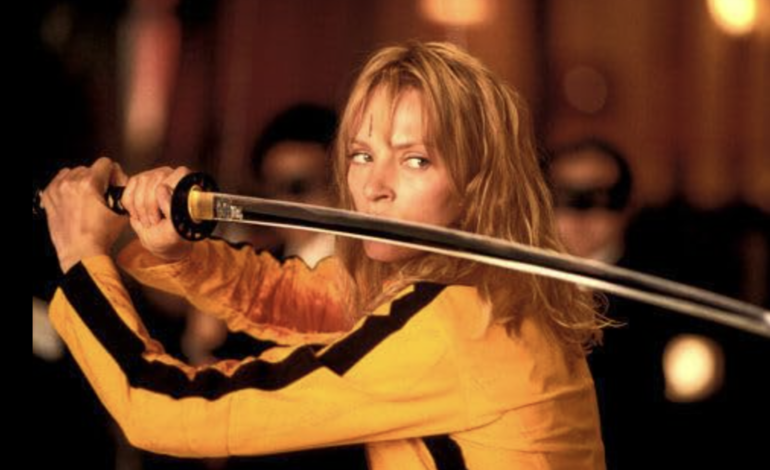

Regarded as one of the greatest American filmmakers ever, Quentin Tarantino’s writing and directing skills have led to an iconic collection of well-loved movies. Films such as Pulp Fiction, Kill Bill (Vol. 1 and 2), and Django Unchained are all a part of his nine-movie portfolio. The rest of his work includes Reservoir Dogs, Jackie Brown, Inglourious Basterds, The Hateful Eight, Death Proof and Once Upon a Time in Hollywood.
While Pulp Fiction is the movie that jumped Quentin Tarantino into prominence in the industry, the most financially profitable film from Tarantino is Django Unchained, as the western received the highest box office results, reaching $425 million worldwide. Once Upon a Time In Hollywood also was awarded major success, as it was nominated for ten Oscars back in 2020, and secured two—one for Best Supporting Actor and the other for Best Production Design.
The fame produced from Tarantino’s films wasn’t a result of luck, but instead a direct consequence of Quentin Tarantino’s unique style and calculated choices on each movie he worked on. Tarantino’s trademark is defined by a variety of specific signatures. Nonlinear narratives are one defining characteristic, paired with a plot and storyline that always keeps the audience guessing. This aspect was one of the reasons why Pulp Fiction was so captivating for viewers when it was first released. As a writer, Tarantino almost constantly pushes against traditional storytelling devices and instead chooses less common paths for his characters to follow.
Tarantino also utilizes sound and color to his advantage as well. His music choices are extremely intentional and set the scene in a way that’s unique to his films. While it’s common to have a heavy or tense song paired with a scene of a similar tone, Tarantino is known to pick songs that are more unconventional, while still maintaining the mood he wants to set. Along with the audio of a movie, Quentin Tarantino focuses on the visuals just as much. His color palettes are all very distinct. Whether it’s the trademark yellow from Kill Bill, the red hues from Pulp Fiction, or the desaturation of Once Upon a Time in Hollywood, color is never forgotten in Tarantino’s movies.
A few other pieces of Quentin Tarantino’s films that make them work well is his well developed characters, his stylized use of violence, and his pop culture references. Tarantino’s characters are always intricate and full of depth, with complex motivations and sharp, clever dialogue. His movies are filled to the brim with violence, but it’s never pointless—but instead used very intentionally to propel the story forward. Finally, as a true movie fan himself. Tarantino’s films are usually written with nods to other movies.
But despite his huge accomplishments, Quentin Tarantino has made it very clear that he only plans on making ten movies in his career. With Kill Bill: Vol. 1 and Kill Bill: Vol. 2 considered two parts of the same film, that means that Tarantino only has one movie left to make before he retires. Originally, that film was going to be The Movie Critic, which would have starred Brad Pitt in a story that followed a bitter movie critic. This would have been Brad Pitt’s third time working with Tarantino. However, as of a few months ago, Tarantino decided to discard the project because he wasn’t happy enough with the script.
The cancellation of the movie left many fans disappointed that the movie would never come to fruition. Others still criticized his decision to only create ten films—they argued that it would only lead to an unhealthy pressure on the tenth and final movie, and that it would stifle Tarantino’s creativity. But on the flip side, Taratino’s discernment on his last film could make it so that he takes extra care in writing and directing the best movie he possibly can. Whatever Quentin Tarantino chooses his last film to be, fans can expect it to be full of creativity, gore and grit, vibrant color, and intriguing characters.

